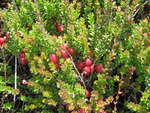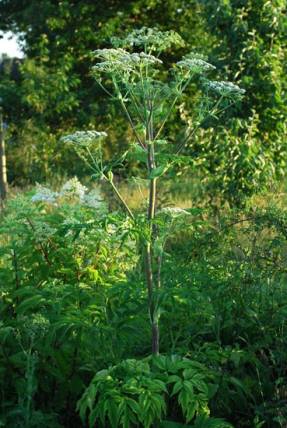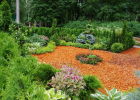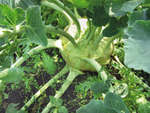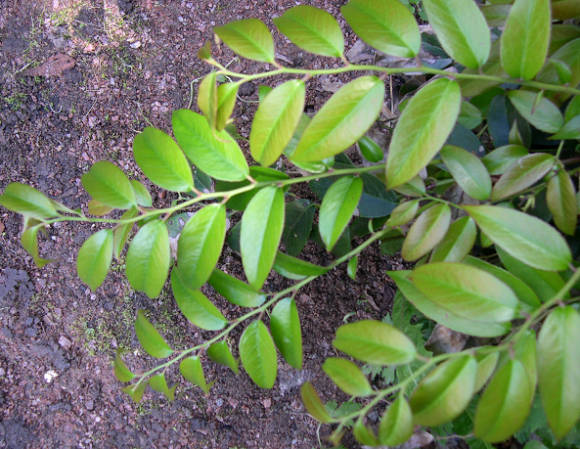
Ornamental peppers, in addition to growing at home, can be grown without problems through seedlings in the open field. There it will be a real annual plant, and every year it will have to be planted again, although in fact, an annual pepper, or shrub (Capsicumannuum) - semi-shrub.
We already talked about growing seedlings in the article We grow decorative pepper at home.
Now - about when, in what place and what varieties of decorative hot peppers can be planted in open ground.
 |  |
Growing ornamental peppers in the open field
Pick-up location... The main thing is to choose a place. It should be as well lit as possible, but at the same time reliably protected from the cold north wind and from the draft.
Plants can be planted in garden containers on their own or by combining them with herbs and flowers.
 |  |
Landing... As for the seedlings, the seeds sown in February turn into full-fledged seedlings closer in mid-May, when the weather settles down and it will be really warm, then it can be planted in open ground.
Seedlings need to be planted in pre-prepared loose soil, devoid of weeds, at a distance that depends on the variety, more precisely the final size of the plant and on your desire - whether you want to build something like a flower bed or rather break a vegetable garden. But usually about 35 cm of free area is left between the plants in order to be able to cultivate plants, soil, and harvest.
After planting, the plants need to be watered, about a liter of water under each, and covered with humus with a layer of a couple of centimeters, in order to preserve moisture and provide the plants with organic food, which will gradually flow to the roots throughout the warm season.
When planting, the stalks of the seedlings cannot be buried - unlike tomato, pepper does not form additional roots, and so you would rather destroy the plant than not strengthen it.

Care... In the future, you need to water the decorative pepper planted in an open area as the soil dries up, preventing it from drying out. You should also fight weeds in a timely manner, and it is advisable to pull them out by hand with the maximum amount of root system, which is very good to do after rain.
As soon as the pepper blooms, which usually happens at the fork of the two main shoots, the flower must be pinched and at the same time all shoots on the plant must be shortened literally by 1 cm, then the bush will really become a bush, it will bloom well, look decorative and give a wonderful harvest.
 |  |  |
Fruiting and harvesting... The flowering of decorative hot peppers usually occurs in the first summer month, and in the second, peppers are already formed. Depending on the cultivar, they can be of different colors, changing during the ripening period, and of different shapes, sometimes completely unlike peppers.
From the garden to the house... In the fall, the specimens you like can be transplanted into pots and transferred to the house, where they are able to bear fruit for another 3 years. Many varieties grow well both outdoors and indoors.
About the terms of content - on the page Capsicum annual and in the article We grow decorative peppers at home.
Many varieties of ornamental hot peppers can be added with care to seasoning meat products, but they are often grown for beauty.

Varieties of decorative peppers for open ground
There are quite a few varieties of peppers suitable for growing in the open field, let's talk about the most interesting:
 |  |  |
- Small miracle - ripens early and produces fruits that are elongated and edible. Of course, the peppercorns are very spicy and are used for seasonings. The bush itself can reach 75 cm, it grows in the shape of a dome. The peppercorns, when ripe, first green, then turn purple, later turn yellow, acquire an orange color and, eventually, become crimson-scarlet.
- Jellyfish - forms elongated and rather thin peppercorns.At the beginning of their ripening, they are literally snow-white, then turn yellow, after which they acquire an orange color and at the end they become bright red. The length of each fruit can reach 6 cm. The taste of this pepper is hot, but not too hot, so it can be eaten even fresh. The plant itself is of modest size, no more than 30 cm, about 20 cm wide.
- Phoenix - ripens in medium terms, about 100 days after the emergence of seedlings on the soil surface. Its fruits are cone-shaped, reaching a length of 5 cm. When ripe, at first they have a green color, then turn yellow, later red and, finally, scarlet-red. The bush is small, no more than 40 cm, has the shape of a ball. Fruiting for a very long period of time, the peppers ripen literally one at a time. The fruits are pungent but can be eaten.
 |  |  |
- Filius Blue - its peppers are violet-blue at the beginning and deep scarlet at the end of ripening. The bush is very small, rarely exceeding a height of 25 cm. It bears fruit for a long period of time and gives a decent harvest. This variety can be called capricious, it will grow only if there is enough moisture, full light and on highly nutritious soil. The taste is spicy, but it is used for food.
- Bride - ripens in medium terms, bush for a long period and bears fruit abundantly. Height - usually no more than 35 cm. Fruits first acquire a creamy color, and at the end of ripening they become bright scarlet. Peppers are used for food, they are very aromatic, but do not forget that they are extremely spicy.
- The Queen of Spades - a very compact plant, reaching a height of about 30 cm even in open ground and having an oval bush shape. Fruits, when fully ripe, turn purple, they are tasty, although the pungency is strong, and fragrant. Of course, their best use is as a seasoning for meat dishes.
 |  |
- Mandarin duck - a variety with a height of 30-40 cm, with dense foliage and creamy rounded fruits, which, as they ripen, turn orange and then red. The variety is very decorative with dense foliage and numerous protruding fruits, it bears fruit for a long time. Slightly spicy, good for canning as a whole and as a seasoning.
- Surprise - an early ripe and high-yielding variety that forms clusters of fruits and simultaneously yields up to 50-60 pieces. Fruits are small, the size of a sweet cherry, green at first, dark scarlet when ripe. Spicy to taste, suitable for culinary use. Plant height - up to 60 cm.
- Jamaica - the fruits of this variety have the shape of a rhombus, when fully ripe, they are rich yellow. The taste of the fruits of this pepper is interesting - the walls may even be sweetish, and the core is very hot.

There are decorative peppers and varieties that are not suitable for food, they are planted only for the sake of decoration:
 |  |
- Clown - it is not suitable for food, but it forms a bush about 40 cm high, gives oval fruits of yellowish, orange or scarlet color, and all this on one plant. The peppercorns hang for up to three months, decorating the space. Prefers areas open to the sun.
- Goldfinger - his peppercorns are inedible, but very beautiful. The length of each fruit can reach 6 cm, they are deep yellow in color, have the shape of pods. The bush is of modest size, even in an open area rarely exceeds a height of 30 cm. The variety adores light, bears fruit very abundantly. The seeds are stored for a long time and sprout just fine.
As you can see, decorative pepper can be grown not only at home, but also in an open area, decorating it, or also used for harvesting, it works great!

